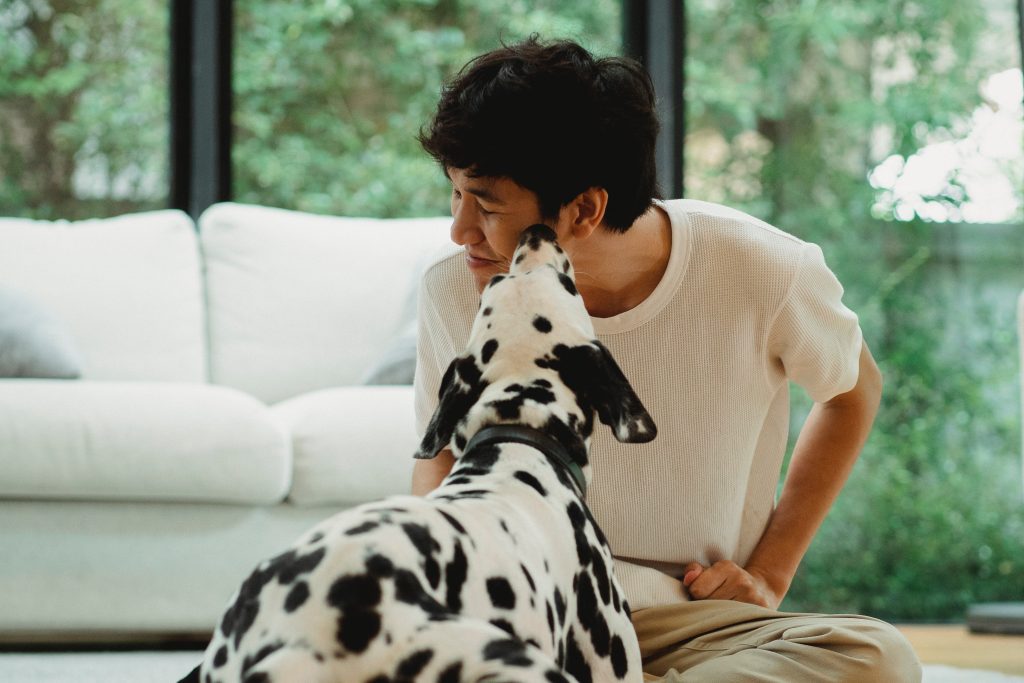Do Dogs Know What a Kiss Is?
Introduction: Do Dogs Know What a Kiss Is?
In the intricate dance of human-animal relationships, our connection with dogs holds a special place. One expression of this bond often leaves us wondering: do dogs understand what a kiss is? Let’s delve into the fascinating world of canine cognition and behavior to unravel the mystery behind doggy kisses.

Can Dogs Interpret Human Actions?
Dogs possess a remarkable ability to interpret human actions. Their understanding extends beyond mere visual cues, tapping into the rich tapestry of our emotions. Can they grasp the concept of a kiss, a gesture so deeply rooted in human affection?
The Science Behind Dog Kisses
To comprehend whether dogs understand kisses, we must explore the scientific aspects of canine perception. Dogs rely heavily on their olfactory senses, and a kiss, to them, is more than a tactile experience. It involves a complex exchange of scents and chemical communication.
The Significance of Licking
A dog’s act of licking, often interpreted as kisses, is a natural behavior deeply ingrained in their instincts. It serves multiple purposes, from grooming to expressing affection. Understanding this aspect of canine behavior sheds light on the true nature of doggy kisses.
Do Dogs Like Kisses?
While some dogs seem to relish kisses, others may not share the same enthusiasm. Dogs, like humans, have unique personalities, and their responses to kisses vary. Reading their body language is crucial in understanding their comfort level with this form of interaction.
Dogs’ Social Behavior
Dogs are inherently social animals, with a strong pack mentality. Their communicative gestures, including licking, play a vital role in maintaining social bonds within the pack. Understanding this aspect provides insight into why dogs engage in what we interpret as kisses.
How Dogs Learn Human Behaviors
Dogs learn by observing human behaviors and through positive reinforcement. This learning process contributes to their understanding of human actions, including the significance of kisses. The bond formed through positive interactions strengthens their comprehension.
Kissing Rituals Across Cultures
The concept of kissing is deeply embedded in human cultural practices. Exploring these rituals unveils the cross-species bonding that occurs between humans and their canine companions. It highlights the universal nature of expressing affection through physical contact.
Interpreting Dog Body Language
To truly understand if dogs recognize kisses, we must decipher their body language. Tail wagging, facial expressions, and other non-verbal cues provide valuable insights into a dog’s emotional state during moments of affection.
Common Misconceptions About Dog Behavior
Misinterpreting dog behavior is a common pitfall for pet owners. Projecting human emotions onto dogs can lead to misunderstandings. Recognizing and addressing these misconceptions is crucial for fostering a healthy relationship with our furry friends.
Responsible Pet Ownership
Respecting a dog’s comfort zone is fundamental to responsible pet ownership. Creating a positive environment encourages trust and reinforces the bond between humans and their canine companions. Understanding and respecting boundaries contribute to a harmonious relationship.
Building Trust with Your Dog
Establishing a strong bond with your dog involves consistent positive interactions. Engaging in activities your dog enjoys and responding to their cues fosters trust. Positive reinforcement creates an environment where dogs feel secure and understood.

How to Safely Kiss Your Dog
While kisses can be a delightful way to express affection, it’s essential to do so safely. Recognizing stress signals in your dog and understanding appropriate displays of affection contribute to a positive experience for both you and your furry friend.
Benefits of Physical Affection for Dogs
Positive physical interactions, including kisses, have a profound impact on the human-animal bond. Studies suggest that regular affectionate gestures contribute to improved behavior in dogs. This reinforces the idea that understanding and reciprocating affection are crucial components of pet ownership.
Conclusion
In the grand tapestry of human-dog relationships, the question of whether dogs understand kisses adds another layer of intrigue. While scientific insights and behavioral observations provide valuable context, the essence of this connection goes beyond mere analysis. Dogs, in their unique way, reciprocate affection, and whether they truly understand the concept of a kiss becomes a testament to the depth of the bond we share.




Leave a comment